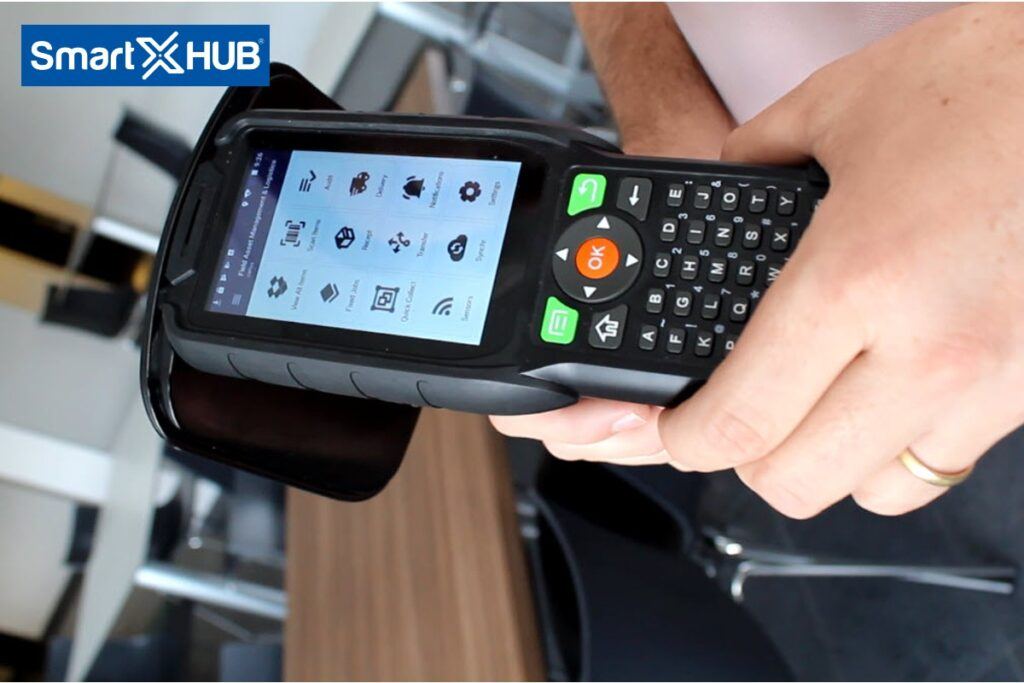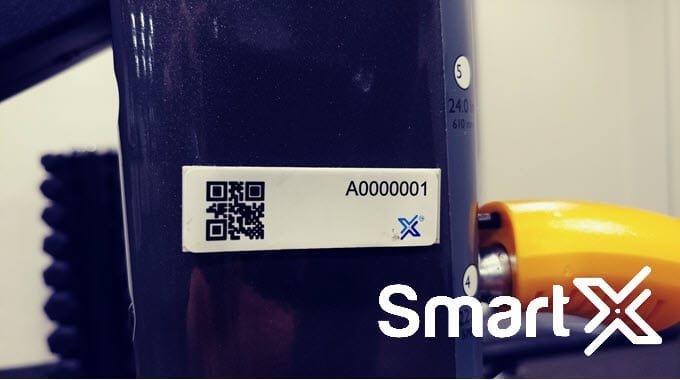Manufacturing Automation Optimized With RFID
Manufacturing Automation Optimized With RFID RFID tags facilitate the seamless transmission of data alongside a product, enriching the information as

Various related technologies are transforming how enterprises acquire, maintain, ship, and store assets. At the forefront of these advancements is the Internet of Things (IoT). IoT represents the interconnected web of physical products, sensors, and digital tracking systems that can exchange information wirelessly. Overall, end-user spending on IoT solutions is expected to grow from $110 billion in 2017 to an incredible $1.6 trillion by 2025.
And IoT offers real profit-boosting potential because it reduces the time and resources spent on asset management. Sensor-equipped assets can easily be tracked and monitored at a distance, with less manual observation needed. IoT also allows to automate functions when collected data is used as a trigger.
Enterprise Asset Management (EAM) is critical for profitability because it helps companies manage their assets more effectively, resulting in improved productivity, reduced costs, and increased revenue.
From the standpoint of maintenance managers, safety managers, and others, EAM software makes it far easier to allocate labor and resources. Looking more broadly, EAM software likewise enables more precise capital allocation and leaner operations.
Customizable metrics and dashboards—combined with a central data repository—enable real-time data visualization and customized reporting. In turn, these capabilities allow for better decision-making each budget cycle.
Here are a few reasons why EAM is so critical for profitability:
Improved Asset Availability: Effective EAM can help companies optimize asset maintenance, reducing downtime and increasing asset availability. This can help improve productivity and reduce unscheduled maintenance and downtime costs.
Reduced Maintenance Costs: EAM software can help companies track maintenance costs and optimize maintenance schedules, reducing costs associated with maintenance and repair.
Extended Asset Life: EAM software can help companies manage the entire asset lifecycle, from acquisition to disposal. By optimizing the management of assets, companies can increase their useful life and reduce costs associated with replacement.
Better Decision Making: EAM software provides real-time data and analytics that can be used to make more informed decisions about asset management. This can help companies identify inefficiencies and areas for improvement, leading to increased profitability.
Improved Regulatory Compliance: EAM software can help companies comply with regulatory requirements and industry standards. This can help avoid fines and penalties, reducing costs and improving profitability.
An effective EAM can help companies improve asset management, reduce costs, increase revenue, and improve profitability. Companies can achieve greater operational efficiency and maximize profitability by implementing EAM software and optimizing asset management practices.
A proper EAM solution is about more than just maintenance, however. EAM software is a powerful profit-booster because it aligns with all the business functions related to physical assets: pricing, investment decisions, capital planning, etc. Essentially, an EAM solution can improve business efficacy in a way that leads to better margins.
Few enterprises can leave asset performance to chance or guesswork. There is simply too much investment at stake.
Informed decision-making requires data centralization, integration, and analytics—all the benefits of an EAM solution. If you’re on the fence about implementation, consider a few of the most important reasons why an EAM software solution should be on your short list of smart investments.
Here are 8 reasons why Enterprise Asset Management (EAM) is a smart investment for companies:
Improved Asset Utilization: EAM software can help companies improve asset utilization and reduce asset downtime, resulting in increased productivity and efficiency.
Better Cost Control: EAM software helps companies track maintenance and repair costs, reducing the likelihood of unnecessary spending on assets.
Increased Safety: EAM software can help companies maintain assets in compliance with safety regulations, reducing the likelihood of accidents and associated costs.
Enhanced Asset Management: EAM software can help companies manage the entire asset lifecycle, from acquisition to disposal, resulting in better asset utilization and reduced replacement costs.
Improved Decision Making: EAM software provides real-time data and analytics that can be used to make more informed decisions about asset management.
Reduced Downtime: EAM software can help companies manage maintenance schedules and reduce unplanned downtime, increasing productivity and profitability. By automating many of the repetitive tasks under the managers’ purview with an EAM software solution, they can significantly increase the number of tasks they accomplish per hour.
EAM enhances employee productivity: EAM software boosts profits by enhancing the productivity—the value—of each team member. Consider your maintenance team, for example. Your maintenance managers contend with seemingly endless lists of work requests, work orders, and the associated budgetary considerations.
Greater Transparency: EAM software provides transparency into asset management activities, enabling companies to track asset performance, maintenance, and repair history.
Increased Regulatory Compliance: EAM software helps companies comply with regulatory requirements and industry standards, reducing the likelihood of fines and penalties associated with non-compliance.
EAM software can reduce excess maintenance inventory: The cost of parts and materials related to maintenance can add up quickly. That often leads asset managers to cut back on inventory orders when budgets are tight. A better solution is to leverage the inventory management functionality of EAM software to balance your inventory purchases.
With RFID or barcode scanning, your EAM can standardize inventory information so every part is accounted for and included in your total inventory. From there, you can review upcoming maintenance and plan proactively for exactly the inventory you need. This will help you allocate your budget appropriately and avoid excess spending on orders for parts and materials you don’t actually need.
The SmartX HUB EAM software RFID enable is a wise investment for companies as it helps optimize asset management practices, improve productivity and efficiency, reduce costs, and increase profitability. By implementing SmartX HUB EAM with RFID software, companies can gain greater control over their assets, improve decision-making, and achieve greater operational efficiency.

Although RFID can potentially be the ideal technology for tracking IT assets, not all RFID solutions are the same. Further, RFID technology without asset management software only tells the user that a tag has been read. It doesn’t provide the information necessary for an organization to gain a holistic view of its assets. As a result, they better track their movements and manage how they are used.
Some companies have enterprise-class management software that tells them the location of their assets, but only when these assets are plugged in and are on the company’s network. If these same assets are unplugged from the network or have been physically removed from the building, this software cannot track the assets. RFID-enabled asset management software provides 24/7 visibility to assets, whether in the building, plugged into the network, or in a remote location and off the network.
SmartX HUB™ AssetTrack is one example of organizations increasingly employing asset management software to improve their tracking capabilities and knowledge.
SmartX HUB AssetTrack is cost-effective RFID-enabled software that allows users to monitor and track the movement and status of valuable IT assets in real-time, resulting in more accurate physical inventories with less manual labor.
This software application works in conjunction with a myriad of RFID tags and readers to provide an end-to-end asset management solution. Because it is completely platform- and hardware-independent software, it is flexible, scalable, and can evolve as a company’s needs develop and change.
The software is also browser-based, meaning that it can be easily deployed on a central computer and doesn’t need to be loaded on each desktop or laptop to use the application. It can be accessed throughout the organization using a standard internet browser like Internet Explorer.
SmartX HUB Asset Management software provides access to historical data, validates asset utilization, maintains asset inventories, allows users to identify deviations from expected asset location or condition, and triggers automatic alerts when combined with the appropriate RFID hardware when deviations occur.
Scalable and flexible, AssetTrack is built on a very robust, independent platform, making it possible for organizations to migrate from barcode-based systems because it reads barcodes as well as RFID tags (and can do so simultaneously). The system remains flexible as an organization grows and its needs change. Companies wishing to migrate from a legacy system to an RFID-enabled asset management system can integrate SmartX HUB EAM with the existing system, thereby preserving their investment while enhancing their asset-tracking processes.

SmartX HUB is the EAM choice for large enterprises. With its single cloud-based solution, you can organize, track, schedule, and manage everything under one platform: assets, inspections, preventive maintenance, work orders, inventory, purchasing, and more.
As importantly, you can integrate these asset-related functions with a customizable analytics dashboard, offering your stakeholders a bird’s-eye view of your most important metrics. Quickly generate reports showing cost savings, margins, and insight for future plans.
By investing in and implementing an automated asset management solution, companies can profit from 24/7 visibility of the status and location of their assets. This control significantly diminishes the potential for stolen, misplaced, or mismanaged assets. Companies can focus their efforts on managing and growing their business rather than mitigating the damage caused by the inefficient use or loss of IT assets and proprietary information. RFID is the technology of today, and the ROI from RFID-enabled asset management is materializing quicker than ever. For instance, on average, companies that have invested in SmartX HUB’s RFID-enabled asset management solution see a return on their investment within the first 12 months.
To learn more about how SmartX HUB EAM software can improve your profits, schedule your personalized demonstration.
Contact us at the SmartX office nearest to you or submit a business inquiry online.
Let us know how we can help you solve your business challenges!
Manufacturing Automation Optimized With RFID RFID tags facilitate the seamless transmission of data alongside a product, enriching the information as
IoT Ecosystem Empowerment: Advancing Workplace Safety and Efficiency with RTLS The Internet of Things (IoT) has arrived In the dynamic
California’s regulations for preventing heat-related illness in outdoor workers Introduction In situations involving high temperatures or extreme heat, it is
Organizations large and small and across industries can leverage RTLS to improve safety, safeguard materials and work more efficiently.
Discover how your peers are benefiting from real-time visibility.
©2014-2024 All Rights Reserved. SmartX Technology Inc